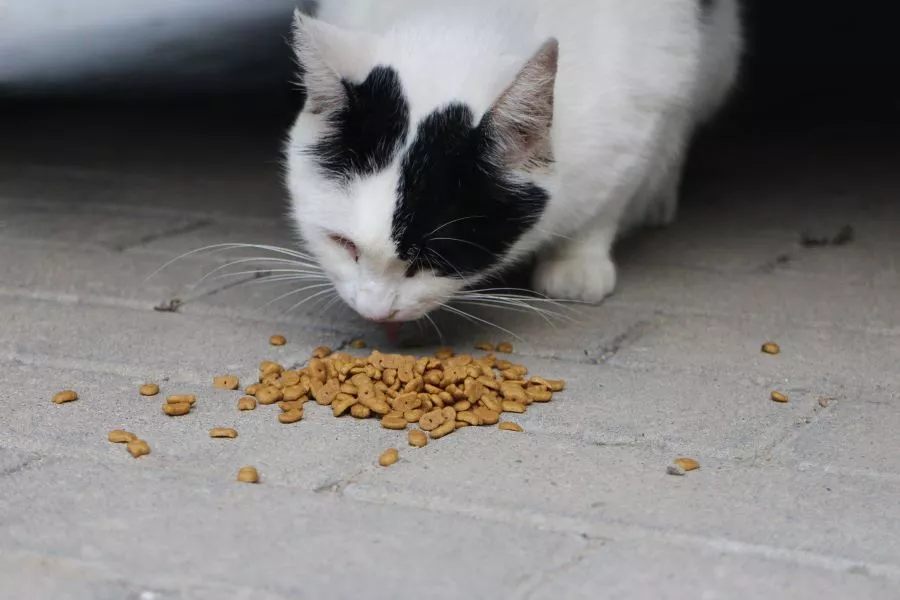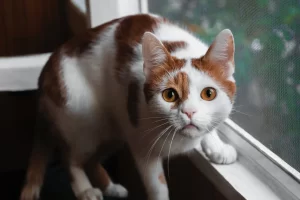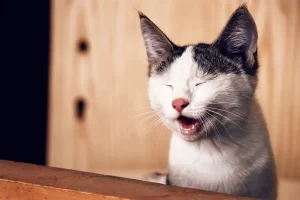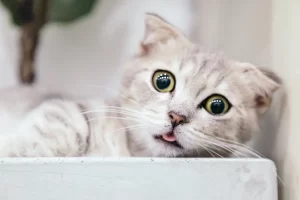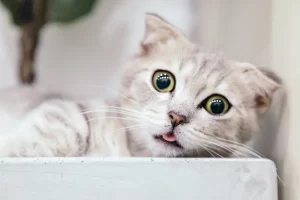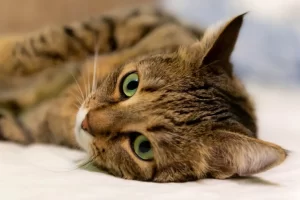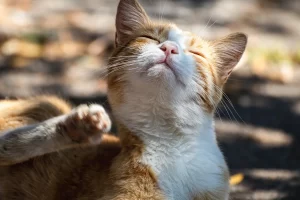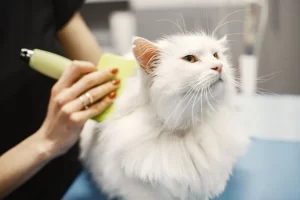As responsible cat owners, one of our primary responsibilities is to provide our feline companions with a healthy and balanced diet that meets their unique nutritional needs. Understanding what cats like to eat is crucial in ensuring that they receive the right nutrients for optimal health and well-being. While cats are obligate carnivores and have specific dietary requirements, they can also show preferences for certain food types and flavors. In this article, we will delve into the topic of what do cats like to eat and explore various food sub-categories, their varieties, and examples that are commonly enjoyed by cats. We will also discuss the reasons behind cats’ food preferences and the importance of feeding them a nutritionally balanced and complete diet to support their overall health. Let’s delve into the world of feline nutrition and uncover what our feline friends truly enjoy eating!
Table of Contents
ToggleWhat Do Cats Like to Eat and Why?
Here is a summary of foods cats like to eat and the reason behind it.
| Food Sub-Category | Examples | Reasons Why Cats Enjoy Eating Them |
|---|---|---|
| Meat | Chicken, turkey, beef, lamb, pork, fish, rabbit | Cats are obligate carnivores and naturally crave the taste and texture of meat. Meat is a rich source of protein, essential amino acids, and other nutrients that are crucial for a cat's health and well-being. |
| Fish | Tuna, salmon, mackerel, sardines, trout | Cats are attracted to the strong smell and flavor of fish. Fish is a good source of high-quality protein, omega-3 fatty acids, and other nutrients that are beneficial for a cat's skin, coat, and overall health. However, fish should be fed in moderation due to potential risks of mercury and thiamine deficiency. |
| Dairy Products | Cheese, yogurt, milk | While cats are lactose intolerant and may have difficulty digesting lactose, some cats may still enjoy small amounts of dairy products as treats. However, it's important to be cautious with dairy as excessive consumption can cause gastrointestinal upset in cats. |
| Eggs | Chicken eggs, quail eggs | Cats may enjoy the taste and smell of eggs, which are a good source of protein, essential amino acids, vitamins, and minerals. Eggs can be fed cooked or raw, but it's important to avoid feeding raw eggs as they may contain harmful bacteria. |
| Vegetables | Spinach, broccoli, carrots, peas, sweet potatoes | Cats are obligate carnivores and do not require vegetables in their diet. However, some cats may enjoy small amounts of cooked or pureed vegetables as a source of fiber or added texture in their food. It's important to ensure that vegetables are safe and suitable for cats, and they should not comprise a significant portion of their diet. |
| Fruits | Blueberries, apples, bananas, watermelon | Cats are not natural fruit eaters and do not require fruits in their diet. However, some cats may show interest in small amounts of fruit as an occasional treat. It's important to ensure that fruits are safe and suitable for cats, and they should not be fed in excessive amounts due to their high sugar content. |
| Grains | Rice, oats, quinoa | Cats are obligate carnivores and do not require grains in their diet. In fact, grains can be difficult for cats to digest and may not provide significant nutritional value. It's generally best to avoid feeding grains to cats, unless prescribed by a veterinarian for specific medical reasons. |
Nutritional Requirements for Cats
Cats have unique nutritional requirements that are essential for their overall health and well-being. Understanding these requirements is crucial for providing a balanced and appropriate diet for cats.
Protein is a critical nutrient for cats as they are obligate carnivores, which means they require animal-based protein for their dietary needs. Protein is vital for various functions in a cat’s body, including building and repairing tissues, maintaining healthy skin and coat, and supporting the immune system. High-quality sources of protein for cats include meat, fish, eggs, and dairy products.
In addition to protein, cats also require essential fatty acids, such as omega-3 and omega-6 fatty acids, which are important for maintaining healthy skin, coat, and joints. These fatty acids are not produced in sufficient amounts by a cat’s body and must be obtained through their diet. Common sources of essential fatty acids for cats include fish oil and certain plant-based oils.
Vitamins and minerals are also crucial for a cat’s diet. Cats require specific vitamins, such as vitamin A, vitamin D, and vitamin B12, as well as minerals like calcium, phosphorus, and magnesium. These nutrients play important roles in various physiological processes, including bone health, nerve function, and immune function. Commercial cat foods are formulated to meet these vitamin and mineral requirements, but it’s essential to ensure that any homemade or raw food diets also provide adequate amounts of these essential nutrients.
Exploring Cat Food Options for Feline Friends
When it comes to feeding cats, there are various types of cat food available in the market, each with its own pros and cons. Understanding the different options can help cat owners make informed choices that align with their cat’s nutritional needs and preferences.
- Dry Food: Dry cat food, also known as kibble, is a popular option for many cat owners due to its convenience and long shelf life. Dry cat food typically contains a higher amount of carbohydrates and lower moisture content compared to other types of cat food. It can be beneficial for promoting dental health in cats, as the crunchy texture can help clean their teeth and reduce plaque buildup. However, some cats may find dry food less palatable and may not drink enough water to compensate for the low moisture content, which could potentially lead to dehydration or urinary tract issues.
- Wet Food: Wet cat food, also known as canned or moist food, contains higher moisture content and lower carbohydrates compared to dry food. This can be beneficial for cats who may not drink enough water or have specific health conditions, such as urinary tract issues or kidney problems, where increased moisture intake is necessary. Wet food is also typically more palatable for cats due to its meaty texture and aroma, which can be beneficial for picky eaters or cats with dental issues. However, wet food can be more expensive and may spoil quickly once opened, requiring proper storage and handling.
- Raw Food: Raw food, also known as a raw or “BARF” (biologically appropriate raw food) diet, consists of feeding cats raw meat, organs, and bones, mimicking the diet of their wild ancestors. Proponents of raw food claim that it provides cats with a more natural and nutrient-dense diet, and may help improve their coat condition, energy levels, and overall health. However, raw food requires careful handling to prevent contamination and may not provide a balanced and complete diet without proper supplementation. It may also pose a risk of bacterial contamination, especially if not handled or prepared correctly, which could potentially lead to foodborne illnesses in cats or their owners.
- Prescription or Therapeutic Diets: Some cats may require specialized diets due to specific health conditions, such as obesity, allergies, or kidney disease. Prescription or therapeutic diets are formulated to meet the unique nutritional needs of cats with these conditions and are available only with a veterinarian’s prescription. These diets may come in various forms, including dry, wet, or raw, and are specifically designed to manage or alleviate the symptoms of specific health issues. Consulting with a veterinarian is crucial when considering prescription or therapeutic diets to ensure that they are appropriate for a cat’s specific condition and dietary requirements.
A Guide to Cat Food Ingredients for a Happy and Healthy Kitty
Understanding the different ingredients in cat food is crucial to providing a nutritionally balanced diet for cats. Here is the main information on common ingredients found in cat food and their role in meeting a cat’s nutritional needs.
- Meat: Cats are obligate carnivores and require animal-based protein as a primary component of their diet. Meat, such as chicken, beef, fish, and lamb, is an important ingredient in cat food as it provides essential amino acids, vitamins, and minerals that are necessary for a cat’s overall health. Look for named meat sources, such as “chicken” or “beef,” as the primary ingredient in cat food to ensure that it meets a cat’s protein requirements.
- Grains: Grains, such as rice, corn, wheat, and soy, are commonly used in cat food as a source of carbohydrates and energy. However, cats have limited ability to digest and utilize carbohydrates, as their digestive system is not designed for a carbohydrate-heavy diet. Grains are not considered essential in a cat’s diet and may not be well-tolerated by all cats, especially those with food sensitivities or allergies. Consider cat foods that are grain-free or have minimal amounts of grains if your cat has specific dietary needs or sensitivities.
- Vegetables: While cats are primarily meat eaters, some commercial cat foods may contain small amounts of vegetables for added fiber, vitamins, and minerals. However, cats do not have a strict requirement for plant-based ingredients, and their nutritional needs can be met through animal-based protein sources. Vegetables in cat food are typically processed or cooked to improve digestibility, as cats have limited ability to break down plant-based ingredients. Vegetables are not a necessary component of a cat’s diet, but if included in cat food, they should be in small amounts and easily digestible.
- Additives: Cat foods may contain various additives, such as vitamins, minerals, antioxidants, and preservatives, to enhance their nutritional profile, flavor, texture, and shelf-life. Vitamins and minerals are essential for a cat’s overall health and well-being and are typically added in balanced amounts to meet its requirements. Antioxidants may be added to help preserve the freshness and quality of the cat food. However, some additives, such as artificial flavors, colors, and preservatives, may not be necessary and could potentially trigger food sensitivities or allergies in some cats. It’s important to read and understand the ingredient list on cat food labels to ensure that any additives used are safe and necessary for a cat’s diet.
- Specialized Ingredients: Some cat foods may contain specialized ingredients, such as probiotics, omega-3 fatty acids, or joint supplements, to address specific health concerns or conditions in cats. Probiotics may promote digestive health, omega-3 fatty acids may support coat and skin health, and joint supplements may aid in joint health for senior cats. These specialized ingredients can provide additional benefits for cats, but it’s important to consult with a veterinarian or a qualified veterinary nutritionist to determine their appropriateness and dosage for your cat’s specific needs.
Best Feeding Practices for Keeping Your Cat Healthy
Feeding practices play a crucial role in maintaining a cat’s health and well-being. Proper portion sizes, feeding frequency, and schedules are essential considerations for providing optimal nutrition to cats. Additionally, special dietary needs for kittens, senior cats, and cats with medical conditions require careful attention to ensure their specific nutritional requirements are met.
- Portion sizes: Providing the appropriate portion size is vital for maintaining a healthy weight in cats. Overfeeding can lead to obesity, which is a significant risk factor for various health issues, including diabetes, joint problems, and heart disease. Underfeeding, on the other hand, can result in malnutrition and inadequate nutrient intake. The ideal portion size for a cat depends on their age, weight, activity level, and overall health status. Consulting with a veterinarian or a qualified veterinary nutritionist can help determine the right portion size for an individual cat.
- Feeding frequency and schedules: Cats are known to be “nibblers,” preferring to eat multiple small meals throughout the day. Feeding cats smaller, more frequent meals can help mimic their natural feeding behavior and promote healthy digestion. However, the specific feeding frequency and schedule can vary depending on a cat’s age, lifestyle, and individual preferences. Some cats may prefer scheduled meal times, while others may do well with free-choice feeding, where food is available all day. It’s important to establish a feeding routine that suits a cat’s needs and monitor their weight and body condition regularly to adjust the feeding schedule if necessary.
- Special dietary needs: Cats have different nutritional requirements at different stages of life and when dealing with medical conditions. Kittens, for example, require more calories, protein, and certain nutrients to support their growth and development. Senior cats may have reduced energy needs and require diets formulated to support their aging bodies, including joint health and kidney function. Cats with medical conditions such as diabetes, urinary tract issues, or food allergies may require special diets tailored to their specific needs. Consulting with a veterinarian or a qualified veterinary nutritionist is crucial when dealing with special dietary needs to ensure that a cat’s nutritional requirements are met and their health is properly supported.
What’s Safe, What’s Not: Human Foods and Toxic Foods for Cats
Cats are obligate carnivores, and their nutritional requirements differ from humans. While cats have specific dietary needs, not all human foods are safe for them to consume. Here is a list of human foods that are safe or unsafe for cats, including a list of common toxic foods that can cause harm to cats.
- Safe human foods for cats: There are some human foods that can be safely fed to cats in moderation. These may include lean-cooked meats, such as chicken, turkey, and beef, without any seasoning or bones. Cats can also consume cooked eggs, plain yogurt, and certain fruits and vegetables, such as cooked carrots and green beans. However, it’s important to remember that these foods should not make up a significant portion of a cat’s diet and should be given as occasional treats in moderation.
- Toxic human foods for cats: Cats are particularly sensitive to certain foods that are considered safe for humans but can be toxic to them. These foods should be strictly avoided in a cat’s diet. Common toxic foods for cats include chocolate, onions, garlic, grapes, raisins, avocados, alcohol, caffeine, and anything sweetened with xylitol. These foods can cause various health issues in cats, ranging from gastrointestinal upset, vomiting, and diarrhea to more severe conditions such as liver and kidney damage, anemia, and even death. It’s crucial to be aware of these toxic foods and keep them out of a cat’s reach at all times.
- Signs of food toxicity in cats: These may include vomiting, diarrhea, loss of appetite, lethargy, increased thirst and urination, jaundice (yellowing of the skin and eyes), pale gums, difficulty breathing, and seizures. If a cat displays any of these signs after ingesting a human food, immediate veterinary attention should be sought.
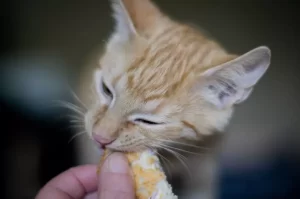
Cat Food Allergies and Intolerances
Just like humans, cats can develop allergies and intolerances to certain foods. Understanding common food allergies and intolerances in cats, along with their symptoms, diagnosis, and management, is essential for providing appropriate dietary care for cats.
Food allergies in cats are typically caused by an immune response to specific proteins in their diet. Common allergenic proteins for cats include beef, chicken, fish, and dairy products. Symptoms of food allergies in cats can vary and may include skin irritations such as itching, redness, and rash, gastrointestinal issues like vomiting and diarrhea, and even respiratory symptoms like sneezing or coughing.
Food intolerances in cats, on the other hand, occur when a cat has difficulty digesting or processing certain food ingredients. For example, cats are lactose intolerant, which means they cannot fully digest lactose, a sugar found in milk and other dairy products. Food intolerances in cats can also cause gastrointestinal symptoms, such as diarrhea, abdominal discomfort, and gas.
Common Misconceptions about Cat Food
There are several common misconceptions about cat food that need to be addressed to ensure that cats receive a nutritionally balanced and appropriate diet. It’s important to dispel these misconceptions to prevent potential health issues associated with feeding cats an improper diet.
- Vegetarian or Vegan Diets: Cats are obligate carnivores, which means their bodies are biologically adapted to thrive on a diet that consists primarily of meat. Unlike humans and some other animals, cats have specific nutritional requirements that can only be met through the consumption of animal-based proteins, essential fatty acids, vitamins, and minerals. Feeding cats a vegetarian or vegan diet can result in severe nutrient deficiencies, such as taurine, arachidonic acid, and vitamin B12, which are essential for a cat’s overall health and well-being. It’s crucial to understand that cats have unique dietary needs and should not be fed a vegetarian or vegan diet.
- Feeding Only Table Scraps or Human Foods: While it may be tempting to share human foods or table scraps with cats, it’s important to remember that these foods may not provide the balanced nutrition that cats require. Human foods are often high in salt, sugar, and unhealthy fats, which can be detrimental to a cat’s health. Feeding only table scraps or human foods can result in imbalances or deficiencies in essential nutrients, and may lead to health issues such as obesity, diabetes, and nutrient deficiencies. Cats should be fed a nutritionally balanced and complete cat food that is specifically formulated to meet their unique dietary requirements.
- Overreliance on Treats or Snacks: Treats and snacks can be a fun way to reward and bond with cats, but overreliance on these can lead to an unbalanced diet. Treats and snacks are usually high in calories, low in essential nutrients, and should be given in moderation to prevent excessive weight gain and nutrient imbalances. It’s important to ensure that treats or snacks do not comprise a significant portion of a cat’s diet and that they are nutritionally balanced and appropriate for cats.
- Homemade Diets without Proper Formulation: As mentioned earlier, homemade diets can be an option for some cat owners, but it’s crucial to ensure that they are properly formulated to meet a cat’s nutritional needs. Simply feeding cats homemade diets without proper formulation or guidance from a veterinarian or veterinary nutritionist can lead to nutrient deficiencies or imbalances, which may result in health issues. It’s important to consult with a veterinarian or a qualified veterinary nutritionist to ensure that homemade diets provide all the necessary nutrients in the right proportions for a cat’s optimal health.
- Not Considering Individual Cat’s Nutritional Needs: Cats have unique nutritional requirements that may vary depending on factors such as age, weight, activity level, and health conditions. It’s important to consider an individual cat’s nutritional needs and tailor their diet accordingly.
Frequently Asked Questions (FAQs) About What Do Cats Like to Eat
What type of food should I feed my cat?
Cats are obligate carnivores, which means they require meat in their diet. It is best to feed them a high-quality, balanced and complete commercial cat food that meets their nutritional needs.
Should I feed my cat wet or dry food?
Both wet and dry cat foods can be suitable for cats. Wet food provides more moisture, which can help with hydration, while dry food can help maintain dental health. You can offer a combination of both types or consult with your veterinarian for specific recommendations.
How often should I feed my cat?
Cats generally do well with two to three small meals per day. The feeding schedule can vary based on your cat’s age, activity level, and health status. Consult with your veterinarian for personalized feeding recommendations.
Can I feed my cat human food?
While some human foods are safe for cats in moderation, it is best to stick to commercial cat foods that are formulated to meet their nutritional needs. Avoid feeding them foods that are toxic to cats, such as chocolate, onions, garlic, and grapes.
What flavors do cats prefer in their food?
Cats are known for being picky eaters and their preferences can vary. However, most cats prefer meat-based flavors such as chicken, beef, and fish.
Can I feed my cat a vegetarian or vegan diet?
Cats are obligate carnivores and require certain nutrients that are only found in animal-based foods. Feeding them a strictly vegetarian or vegan diet can lead to nutritional deficiencies and health issues. It is not recommended unless under the guidance of a veterinary nutritionist.
How much food should I feed my cat?
The amount of food a cat needs depends on factors such as their age, weight, and activity level. It is best to follow the feeding guidelines on the cat food package or consult with your veterinarian for appropriate portion sizes.
Can I free-feed my cat?
Free-feeding, where food is left out all the time for cats to eat as they please, can lead to overeating and weight gain. It is recommended to establish a regular feeding schedule and portion control to maintain your cat’s weight and health.
Should I give my cat treats?
Treats can be given to cats in moderation as a special treat or as a reward for good behavior. However, they should not make up a significant portion of your cat’s diet as they can be high in calories and lacking in essential nutrients.
What should I do if my cat is a picky eater?
Cats can be finicky eaters for various reasons. It is important to offer balanced and complete cat food, try different flavors or textures, and avoid feeding table scraps or excessive treats. If your cat’s appetite changes significantly, consult with your veterinarian for further evaluation.
Can I feed my cat raw or homemade food?
Raw or homemade diets require careful formulation and balance to meet a cat’s nutritional needs. They can be risky as they may contain harmful bacteria or lack essential nutrients. It is best to consult with a veterinary nutritionist if you are considering feeding your cat a raw or homemade diet.
Can I change my cat’s food suddenly?
Cats can have sensitive digestive systems, and sudden changes in their food can cause upset stomachs. It is recommended to transition to a new cat food gradually over 7-10 days by mixing increasing amounts of the new food with the old food.
Can I feed my senior cat the same food as my adult cat?
Senior cats have different nutritional requirements compared to adult cats, such as lower calorie levels and additional joint and digestive support. It is recommended to feed senior cats a specifically formulated senior cat food to meet their unique needs.
Can I give my cat milk or dairy products?
While cats are known to enjoy the taste of milk, most adult cats are lactose intolerant and can experience digestive upset from consuming dairy products. It is best to avoid giving your cat milk or dairy products, unless they are specifically formulated for cats.
Can I feed my cat leftovers from my own meals?
Human leftovers may not provide the balanced nutrition that cats need and can be high in salt, spices, and other ingredients that can be harmful to cats. It is best to stick to commercial cat foods that are formulated for their specific nutritional needs.
Can I feed my cat raw fish or seafood?
Raw fish or seafood can contain harmful bacteria and enzymes that can be detrimental to a cat’s health. It is best to avoid feeding raw fish or seafood to your cat and opt for cooked options instead.
Can I feed my cat a grain-free diet?
Grain-free diets for cats have become controversial as recent studies have linked them to certain health issues. It is recommended to consult with your veterinarian before feeding your cat a grain-free diet and opt for a nutritionally balanced and complete cat food that meets their needs.
Can I feed my cat the same food every day?
Cats thrive on variety, and feeding them the same food every day may lead to nutrient deficiencies or food aversions. It is best to offer a rotation of different flavors or brands of high-quality cat food to provide a balanced and enjoyable diet.
Can I feed my cat raw eggs?
Raw eggs can contain avidin, which can interfere with biotin absorption in cats, leading to skin and coat issues. It is best to avoid feeding raw eggs to your cat and stick to cooked options instead.
How can I tell if my cat likes the food I’m feeding them?
Cats can be subtle in showing their food preferences. Signs that your cat likes their food may include eagerness to eat, purring while eating, and cleaning empty bowls after feeding. However, every cat is different, and it’s important to monitor your cat’s health and consult with your veterinarian for any concerns about its diet.

